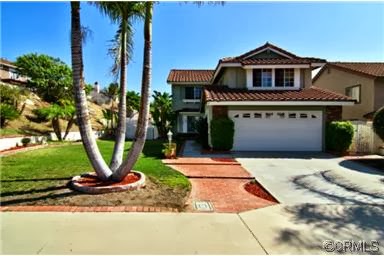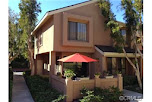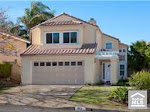Nancy and Thomas James' Dana Point home has expansive ocean views, four bedrooms, a wide deck for entertaining, solar paneling – even an elevator.
But until recently, the 3,258-square foot house – now on the market for $2.29 million – lacked something basic. It had just one bedroom closet.
That setup had suited the Jameses just fine. Over the years, the couple tore out closets to repurpose bedrooms they weren't using. Thomas and Nancy James, both chiropractors, weren't focused on whether that could be a stumbling block to a sale someday.
Without closets, though, the rooms could not be counted as bedrooms, prompting their listing agent to observe, “ ‘You do realize this is a really expensive one-bedroom home?'''
A house that's outside the norm for a neighborhood can hobble the owners when it's time to sell. Some real estate agents and appraisers, however, say many sellers these days feel too much pressure to remodel even standard homes, whether it's because of popular TV shows and flashy home design websites, or because friends or agents recommend it when it's not really needed.
In the case of most homes being readied for sale, “You shouldn't remodel the home,” said Mac Mackenzie, an agent at Coldwell Banker Residential Brokerage in Irvine. “People (looking to sell) are paying too much attention to television, and they're not getting the proper evaluation.”
The value of real estate depends on the location, market segment and cycle, said appraiser Steven R. Smith of Redlands, who's conducted appraisals of homes in the Los Angeles area and throughout the U.S. over his more than 30-year career.
“The exact same (remodeling) money spend in the wrong location or market segment may not be recaptured, while in the right location or market segment it may be more than recaptured,” said Smith, who's evaluated such homes as a 249-acre Rancho Mirage estate with an 18,400-square-foot main house and its own 19-hole golf course. Software billionaire Larry Ellison snapped it up three years ago for just under $43 million.
PUSHING BACK
Many houses about to go on the market could use clean windows and perhaps carpet and paint. Maybe a new roof and some other repairs.
Even contractors find themselves pushing back on homesellers' urge to upgrade.
Paul Paniagua, owner of All Pro Builders in Fullerton, said he's persuaded people about to put their homes up for sale not to remodel, even if their agent suggested it.
"I try to talk them out of it,” Paniagua said. He tells homeowners, "Why don't you put the house up on the market for what you're asking for and see what type of offers you get? If you're absolutely being low balled and truly believe it's the kitchen, we can talk about some things we can do."
He added, “Some people can just throw a countertop on and that's night and day."
Often times, homebuyers are looking for the total package – a home with modest upgrades throughout, said Ryan Lundquist, a Sacramento appraiser who writes about the housing market.
A gleaming new kitchen certainly can help sell a home, he said. “However, a kitchen remodel is also one of the most expensive remodels and … the resale market may not be willing to pay that much.”
“The layout of the house, though, matters greatly though, too, and has to be right,” he said. “Otherwise a (new) kitchen that comes with the rest of a house that does not work is really not all that desirable.”
It's tough for homeowners to fully recapture what they spend on remodeling at the time of a sale, said Dean P. Zibas, an Orange County real estate appraiser. And many homebuyers may not see the need – or the value – of certain pricey upgrades.
He and other appraisers cited among the latter:
• Anything that's atypical to the local market. “For example, I love racquetball, but having an indoor racquetball or sports court does not appeal to most buyers,” Zibas said.
• Expanded rooms – removing a wall to make one large bedroom instead of two smaller ones.
• Panic rooms.
• Built-in aquariums.
• A six-plus car garage at an average house.
• Turning a garage into a separate living space. “Converting a garage is almost always a negative because home owners need a place to park their cars or store their stuff,” Lundquist said. “A garage conversion often still feels like a garage instead of a part of the house, so in many cases buyers aren't willing to pay the same price per-square-foot for the conversion.”
• Some home offices. It depends on a few variables, appraisers say.
“In some market segments were many owners work at home, having a home office that is closed off or separated from the other living areas, may more than pay back the cost of building it,” Smith said. “Having an office that is separate from the living areas is a good thing. Having one that is tandem to a bedroom is not.”
Making unnecessary re-dos before a sale can sabotage it in another way, Mackenzie said.
"While you're in the middle of a remodel you probably shouldn't be doing, you could lose the sale of your home to someone who comes and buys one around the corner,” he said. “In most cases, it's not worth the risk."
THE LONG HAUL
The Jameses recently finished restoring three bedroom closets – and they did so at Mackenzie's suggestion. The home was an exception to the advice he usually gives about remodeling right before a sale. But without enough bedrooms, the residence wouldn't sell for the best price.
The restoration was among the latest remodeling changes that the couple, who have two grown children, made to the house through the years.
All along, said Nancy James, “We were upgrading for us – and for selling the home.” Her rule of thumb for those who want to make changes with an eye toward an eventual resale: “Don't be afraid to go in and fix it up. Get a little unique. But don't go crazy.”
Several appraisers said they like the idea of improving a house over the long haul.
“If someone has a home they like in the location they like,” Smith said, “spending money to keep it up to date is a good thing.”
Some money needs to be spent to keep a property competitive, he noted. “Older properties that have not been updated can sell near or not too far below the best updated, remodeled homes in the best real estate market cycle,” he said, “(but) way below during the worst market conditions.”
In Lake Forest, Jim Hobbs has been undergoing an extensive remodel on a home he bought in the Sycamore Creek community 35 years ago, as the third house in the tract.
He's not planning to move anytime soon.
Hobbs, a First Team Real Estate agent and house flipper, said he had a pretty good year in 2013. So he's recently redone his kitchen, knocked down walls and put in new floors. Last week, his master bathroom was taking shape: A new shower and cabinets, quartz countertop, faucets and light fixtures.
Almost nothing will be the same.
“The only thing that's original is the toilet,” said Hobbs, as workers prepared to install a large vanity mirror.
“I can't see rushing to do it before you sell it, because you aren't going to be able to enjoy it,” Hobbs said. “I'll reap it one day.”
Read more...
































































